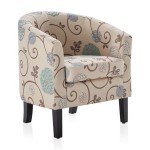Large Floor Tiles For Living Room: A Comprehensive Guide
Large floor tiles have become increasingly popular for living rooms, offering a contemporary aesthetic and a range of practical benefits. This article provides a detailed exploration of the advantages, considerations, and selection process involved in choosing large format tiles for a living room space. It encompasses aspects like size, material, design considerations, installation implications, and maintenance requirements, enabling a well-informed decision-making process.
Aesthetic Advantages of Large Floor Tiles
The primary appeal of large floor tiles in living rooms lies in their visual impact. The larger dimensions of these tiles create a more spacious and seamless appearance. Fewer grout lines translate to a cleaner, less cluttered look, enhancing the overall sophistication of the room. This visual effect is particularly advantageous in smaller living rooms, where the perceived size can be significantly increased by minimizing visual interruptions.
Furthermore, large tiles offer a greater canvas for showcasing intricate patterns and textures. Many manufacturers now produce large format tiles that mimic natural stone, wood, or concrete, allowing homeowners to achieve a high-end look without the higher cost or maintenance associated with the real materials. The expansive surface area allows these patterns to flow more naturally, creating a more realistic and visually appealing outcome.
The contemporary aesthetic is further enhanced by the ability to use rectified tiles. Rectified tiles are precisely cut and ground to ensure uniform dimensions, allowing for minimal grout lines, sometimes as narrow as 1/16th of an inch. This creates an almost monolithic surface, particularly when combined with color-matched grout, significantly contributing to a modern and minimalist design.
Practical Benefits of Large Floor Tiles
Beyond aesthetics, large floor tiles also offer several practical advantages for living room environments. The reduced number of grout lines translates to easier cleaning and maintenance. Grout lines are notoriously susceptible to staining and mildew growth, requiring frequent cleaning and resealing. With fewer grout lines, there is less surface area for dirt and grime to accumulate, making it easier to keep the floor looking clean and fresh.
Larger tiles also contribute to improved durability and resistance to wear and tear. Because they cover a larger surface area with fewer individual pieces, there are fewer edges that can chip or crack. This is especially important in high-traffic areas like the living room. High-quality porcelain or ceramic large format tiles are known for their strength and resilience, making them a long-lasting flooring option.
Tile floors are also inherently water-resistant, making them suitable for living rooms that may be prone to spills or moisture. While it's still important to clean up spills promptly to prevent staining, the non-porous nature of tile helps to protect the subfloor from water damage. This is especially beneficial in homes with children or pets.
Another lesser-known benefit involves thermal properties. Tile, particularly when installed over a concrete slab, can provide thermal mass, helping to regulate the temperature of the room. This can contribute to energy efficiency by reducing the need for heating or cooling, depending on the climate.
Considerations for Choosing Large Floor Tiles
Before committing to large floor tiles for a living room, it is crucial to consider several key factors to ensure a successful installation and long-term satisfaction. These factors range from room size and layout to material choices and installation requirements.
Size and Layout of the Living Room
The size and shape of the living room are crucial determinants in selecting the appropriate tile size. While large tiles can visually expand a smaller room, excessively large tiles in a confined space can appear disproportionate and overwhelming. It is essential to strike a balance between creating a sense of spaciousness and maintaining visual harmony. As a general guideline, tiles should be proportional to the room's dimensions. For instance, a small living room might benefit from tiles in the 24x24 inch range, while a larger room could accommodate tiles up to 48x48 inches or even larger.
The layout of the room also influence tile size and placement. Awkward angles or irregular shapes may necessitate more cuts, which can detract from the clean, seamless effect of large format tiles. In such cases, carefully planning the tile layout and considering the placement of furniture can help to minimize cuts and maximize the visual impact.
Material Selection and Properties
The choice of tile material is another critical consideration. Porcelain and ceramic are the most common choices for floor tiles, each offering distinct advantages. Porcelain tiles are denser and more durable than ceramic tiles, making them more resistant to scratches, stains, and water damage. They are also suitable for both indoor and outdoor use. Ceramic tiles, on the other hand, are generally more affordable and easier to cut, making them a suitable option for less demanding applications. The Porcelain Enamel Institute (PEI) rating, which measures the tile's resistance to abrasion, should also be considered, especially for high-traffic areas.
Other material options include natural stone, such as marble, granite, and travertine. While natural stone offers a luxurious aesthetic, it is more expensive and requires more maintenance than porcelain or ceramic tiles. Natural stone is also porous and susceptible to staining, so it must be properly sealed and maintained. Consider the long-term maintenance requirements before opting for natural stone.
The surface finish of the tile also influences its aesthetic and functional properties. Polished tiles offer a glossy, reflective surface that can enhance the brightness of the room but they can also be slippery when wet. Matte tiles provide a more subtle, non-reflective surface that offers better slip resistance. Textured tiles can add visual interest and improve traction, making them a good choice for areas prone to moisture.
Installation and Subfloor Preparation
Proper installation is crucial for achieving the desired aesthetic and ensuring the longevity of large floor tiles. Due to their size and weight, large format tiles require a perfectly level and stable subfloor. Any imperfections in the subfloor can lead to tile cracking or uneven surfaces. A self-leveling compound may be necessary to create a perfectly flat base. The subfloor must also be able to support the weight of the tiles, especially if natural stone or thick porcelain tiles are used. Reinforcing the subfloor may be required in some cases.
The installation process itself requires specialized tools and techniques. A tile saw with a large cutting capacity is essential for cutting large format tiles accurately. A notched trowel with the appropriate notch size ensures proper mortar coverage. A vacuum pump may be needed to handle the large tiles safely and efficiently. Professional installation is highly recommended, as experienced tile installers have the expertise and equipment needed to handle large format tiles properly.
Grout selection is another important aspect of the installation process. Epoxy grout is a popular choice for large floor tiles because it is highly resistant to stains, mildew, and chemicals. It is also more durable than cement-based grout and requires less maintenance. Color-matched grout can minimize the appearance of grout lines, creating a more seamless look. The width of the grout lines should also be carefully considered. Narrow grout lines (1/16th to 1/8th inch) are ideal for creating a modern, minimalist aesthetic, but they require perfectly rectified tiles and precise installation.
Maintenance and Cleaning
While large floor tiles are generally easy to maintain, regular cleaning is necessary to keep them looking their best. Sweep or vacuum the floor regularly to remove dirt and debris. Mop the floor with a neutral pH cleaner specifically designed for tile. Avoid using harsh chemicals or abrasive cleaners, as they can damage the tile surface or grout. Promptly clean up spills to prevent staining. Re-sealing grout lines periodically can help to prevent staining and mildew growth.
The type of tile material also influences maintenance requirements. Natural stone tiles, for example, require more frequent sealing and specialized cleaning products. Porcelain and ceramic tiles are generally more resistant to staining and easier to clean. Consider the long-term maintenance requirements when choosing a tile material.

Top Flooring Trends Oversized Tile Carpet One Floor Home

Extra Large Floor Tiles Quality Contemporary At Low Prices

Modern Living Room Floor Tiles By Future Stiles

How To Pick Porcelain Stoneware Tiles For Your Living Room See Our Ideas Cerrad

Large Floor Tiles The Big Store

Living Room Floor And Wall Tiles Supergres

How To Pick Porcelain Stoneware Tiles For Your Living Room See Our Ideas Cerrad

Modern Living Room Floor Tiles By Future Stiles

Make A Statement With Large Floor Tiles

Living Room Floor And Wall Tiles Supergres








